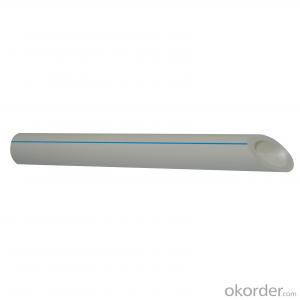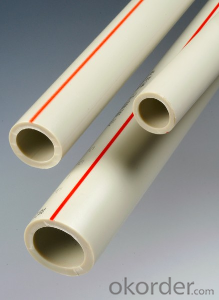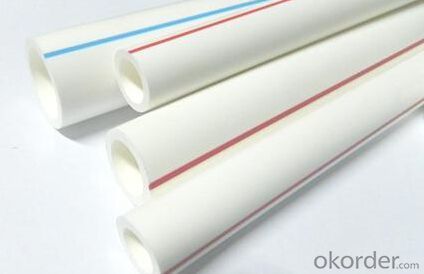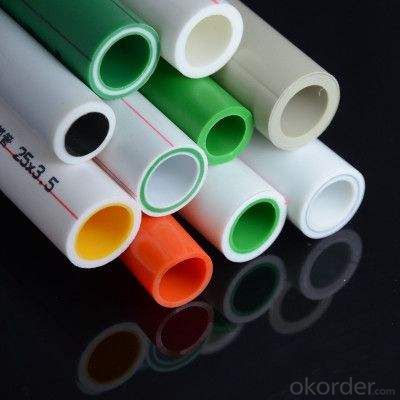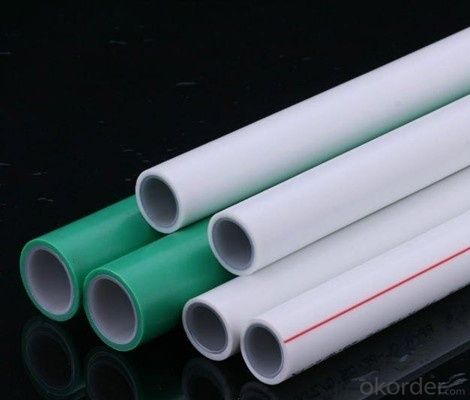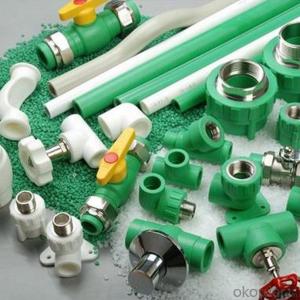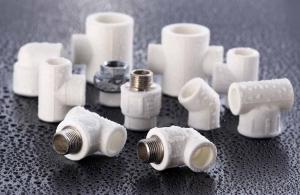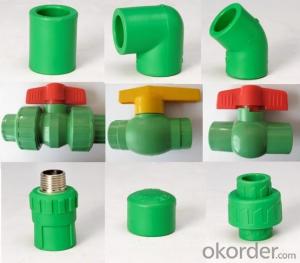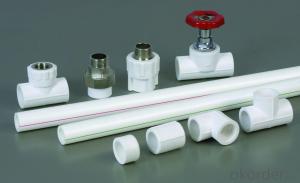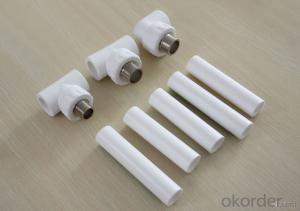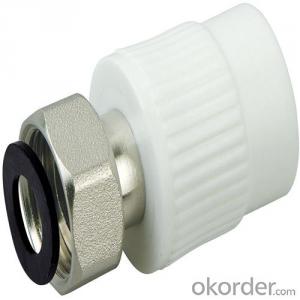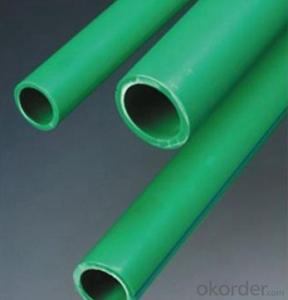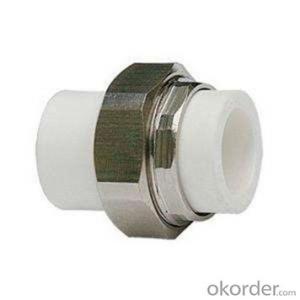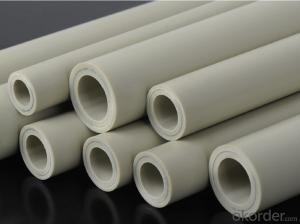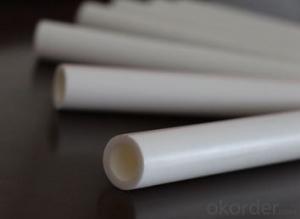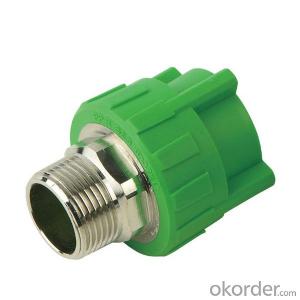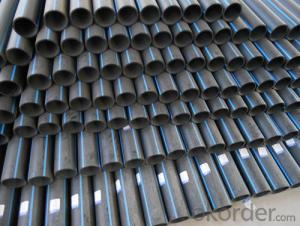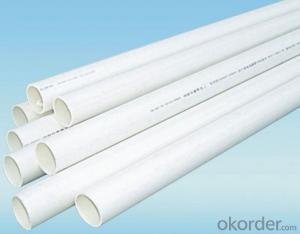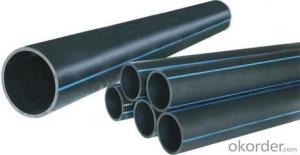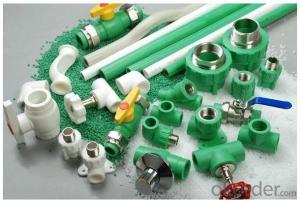2024 PPR Pex Pipe Plastic Fittings - Industrial Field Eco-Friendly
- Loading Port:
- China main port
- Payment Terms:
- TT OR LC
- Min Order Qty:
- 1000 pc
- Supply Capability:
- 100000 pc/month
OKorder Service Pledge
OKorder Financial Service
You Might Also Like
Specification
Description of Product
1. It is used in industrial fields, agriculture and garden irrigation
2. Beauty appearance.
3. Thermal insulation and energy saving.
4. Easy installation
5. Excellent heat resistance and pressure resistance
6. Affordable price
Size
CODE | SPECIFICATION/mm | Wall Thickness | METER/PACK/(m) | |
SDR6/S2.5/PN25 | DSA421 | DN20 | 3.4mm | 160 |
DSA422 | DN25 | 4.2mm | 108 | |
DSA423 | DN32 | 5.4mm | 60 | |
DSA424 | DN40 | 6.7mm | 40 | |
DSA425 | DN50 | 8.3mm | 28 | |
DSA426 | DN63 | 10.5mm | 20 |
Specification
Products name | PPR Pipe |
Material | PPR |
Field of Application | Water |
Work temperature | -10℃-110℃ |
Packing | PE bag and carton |
Function | Kitchen, home, commercial, garden and general |
Place of origin | Hebei China(mainland) |
Brand | CMAX |
Certificate | CE,ISO9001 |
Product Applications:
1.Distribution for cool and hot water
2.Duct for drinkable water system
3.Pipes for kinds of high-temperature and low-temperature heating system
4.Pipes for heating and coolling settings in solar energy system
5.Connecting pipe for air conditioners
Product Advantages:
1) Healthy, bacteriological neutral, conforming to drinking water standards
2) Resistant to high temperatures, good impact strength
3) Convenient and reliable installation, low construction expenses
4) Excellent heat-insulation property from minimum thermal conductivity
5) Lightweight, convenient to transport and handle, good for labor-saving.
6) Smooth inner walls reduce pressure loss and increase flow speed
7) Sound insulation (reduced by 40% compared to galvanized steel pipes)
8) Light colors and excellent design ensure suitability for both exposed and hidden installation
9) Recyclable, environment-friendly, accords with GBM standards
Company Profile
CNBM International Corporation (CNBM International) is the most important trading platform of CNBM Group Corporation, a state-owned company under the direct supervision of State-owned Assets Supervision and Administration Commission of the State Council.
Since 2004, the trading volume of CNBM International has been doubled in 5 successive years owing to the support of superior corporations and effort of all staff. Meanwhile, we have established strategic partnerships with hundreds of domestic manufacturers and sound business relations with clients from over 120 countries. Currently, we have wholly-owned overseas subsidiaries and branches in 5 countries with a view to realize localization, which also represents an essential progress in our globalization target.

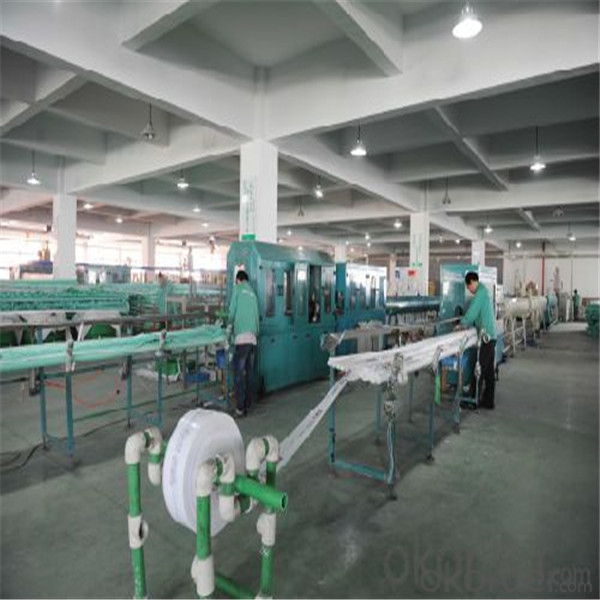
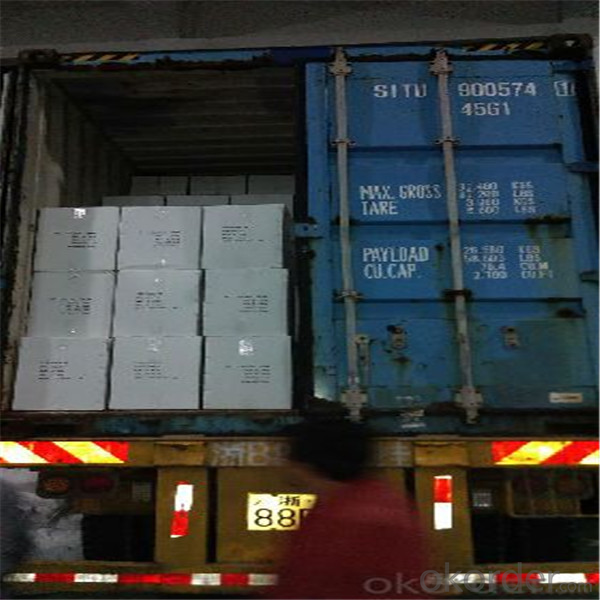

With the advantages in Cement, Composite Materials, New Building Materials and Engineering, we mainly concentrate on coal, steel and construction equipment and give priority to solar and wind energy development simultaneously utilizing our competitive position on traditional building materials to achieve sales revenue of RMB10 Billion in 2013.
CNBM International is highly recognized by its business partners and clients all over the world and has obtained rapid development under the spirit of win-win. We will carry on the mutual beneficial, innovative and revolutionary trading structure as we did before, create value for our employees, share holders and clients and benefit the whole society in our future development.
FAQ:
Q1:How Can I Get A Sample?
A1:You can get samples by communicate with our export sales.
Q2:How Long Is Delivery?
A2:Delivery time will be30-45days according to order quantity.
Q3:What Is The MOQ?
A3:MOQ depends on different items.
Q4:What Is Our Normal Payments Terms?
A4:Our normal payment terms now is: T/T, L/C or western union,paypal
- Q: Are plastic pipe fittings suitable for hot water applications?
- Yes, plastic pipe fittings are suitable for hot water applications. They are commonly made from materials such as PVC, CPVC, or PEX, which have high temperature resistance and can withstand the heat of hot water systems. Additionally, plastic pipe fittings are lightweight, easy to install, corrosion-resistant, and cost-effective, making them a popular choice for hot water plumbing projects.
- Q: Are plastic pipe fittings suitable for mining operations?
- Yes, plastic pipe fittings can be suitable for mining operations depending on the specific needs and requirements of the operation. Plastic fittings can offer advantages such as corrosion resistance, lightweight construction, and ease of installation. However, the suitability of plastic pipe fittings in mining operations should be evaluated based on factors such as the type of mining process, temperature and pressure requirements, and compatibility with the materials being transported.
- Q: Can plastic pipe fittings be used for fluid handling in manufacturing?
- Yes, plastic pipe fittings can be used for fluid handling in manufacturing. Plastic pipe fittings are commonly used in various industries due to their durability, chemical resistance, and ease of installation. They are particularly suitable for handling non-corrosive fluids such as water, chemicals, and gases. However, it is important to consider the specific requirements of the manufacturing process, such as pressure, temperature, and compatibility with the fluid being handled, to ensure the appropriate selection of plastic pipe fittings.
- Q: Can plastic pipe fittings be used for aboveground applications?
- Yes, plastic pipe fittings can be used for aboveground applications. They are commonly used in various plumbing and irrigation systems for aboveground installations due to their durability, corrosion resistance, and ease of installation.
- Q: Can plastic pipe fittings be used in water treatment systems?
- Yes, plastic pipe fittings can be used in water treatment systems. Plastic pipe fittings are commonly used in water treatment systems due to their durability, corrosion resistance, and cost-effectiveness. They can effectively handle the flow of water and withstand the harsh chemical environments often found in water treatment processes.
- Q: Are plastic pipe fittings resistant to chemicals?
- Yes, plastic pipe fittings are generally resistant to chemicals. They are designed to withstand a wide range of chemicals and are commonly used in various industries where chemical resistance is required. However, the specific level of resistance can vary depending on the type of plastic used and the chemicals involved. It is important to consult the manufacturer or supplier for detailed information on chemical compatibility before using plastic pipe fittings in specific chemical applications.
- Q: Can plastic pipe fittings be used for geothermal systems?
- Yes, plastic pipe fittings can be used for geothermal systems. Plastic pipes, such as high-density polyethylene (HDPE) or cross-linked polyethylene (PEX), are commonly used in geothermal systems due to their ability to withstand high temperatures, corrosion resistance, and durability. Plastic pipe fittings specifically designed for geothermal applications help ensure proper connections and system integrity.
- Q: How do plastic pipe fittings handle high-velocity water flow?
- Plastic pipe fittings are generally designed to handle high-velocity water flow effectively. They are constructed using durable materials such as PVC or CPVC, which have excellent resistance to erosion and corrosion. The smooth interior surface of plastic pipes and fittings helps to reduce frictional losses and turbulences, enabling efficient water flow even at high velocities. Additionally, plastic fittings are often designed with secure and reliable jointing mechanisms, ensuring they can withstand the pressure and forces associated with high-velocity water flow without leaking or failing.
- Q: Do plastic pipe fittings have a maximum operating flow rate?
- Yes, plastic pipe fittings do have a maximum operating flow rate. The maximum flow rate is determined by the size and design of the fitting, as well as the type of plastic material used. Exceeding the recommended flow rate can lead to pressure loss, leaks, or even failure of the fitting. It is important to consult the manufacturer's specifications or guidelines to ensure proper usage and avoid any potential issues.
- Q: Can plastic pipe fittings be used for wastewater treatment systems?
- Yes, plastic pipe fittings can be used for wastewater treatment systems. Plastic pipes and fittings are commonly used in wastewater treatment systems due to their corrosion resistance, durability, and cost-effectiveness. They are able to handle the harsh chemicals and varying temperatures found in wastewater treatment processes, making them a suitable choice for this application.
Send your message to us
2024 PPR Pex Pipe Plastic Fittings - Industrial Field Eco-Friendly
- Loading Port:
- China main port
- Payment Terms:
- TT OR LC
- Min Order Qty:
- 1000 pc
- Supply Capability:
- 100000 pc/month
OKorder Service Pledge
OKorder Financial Service
Similar products
Hot products
Hot Searches
Related keywords
